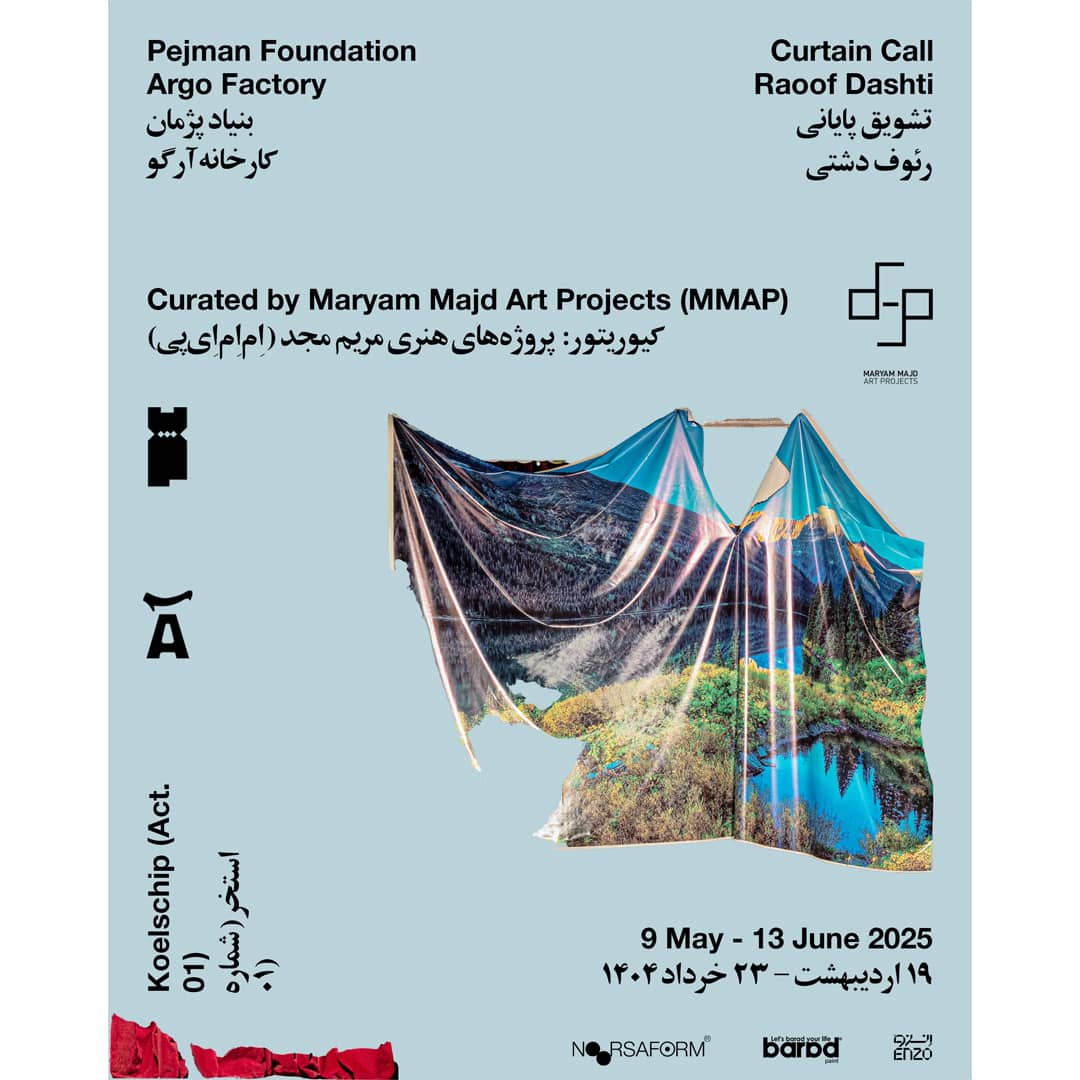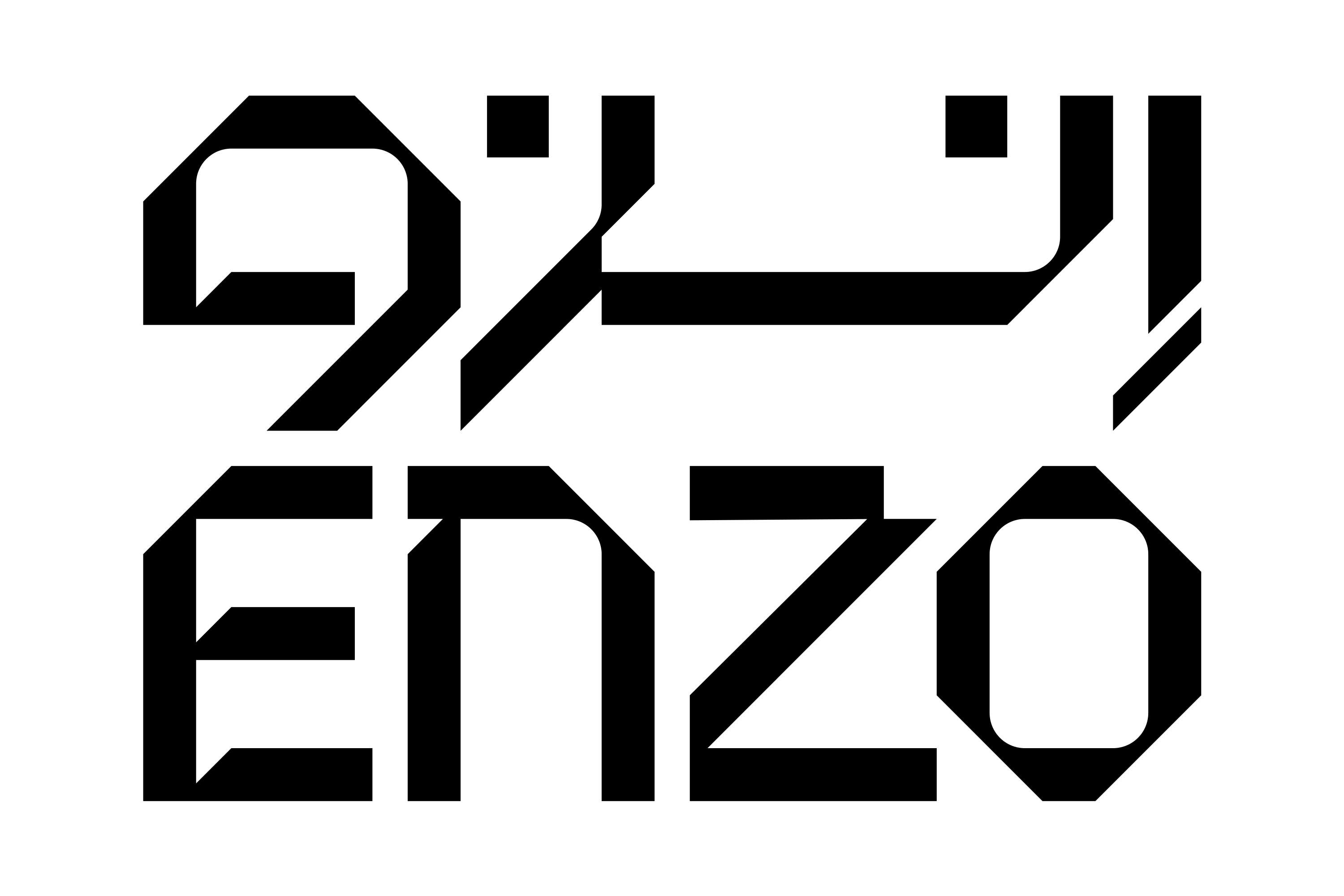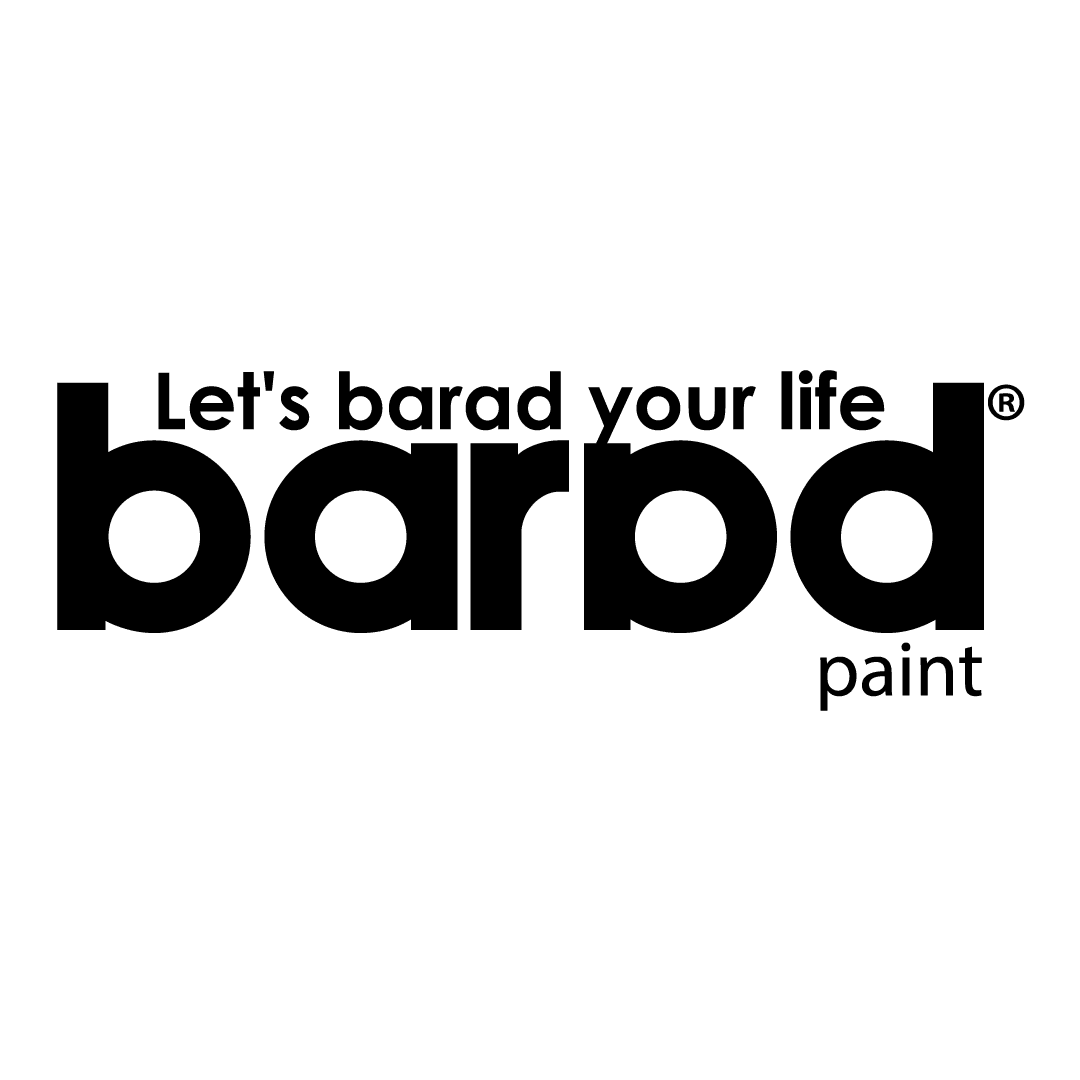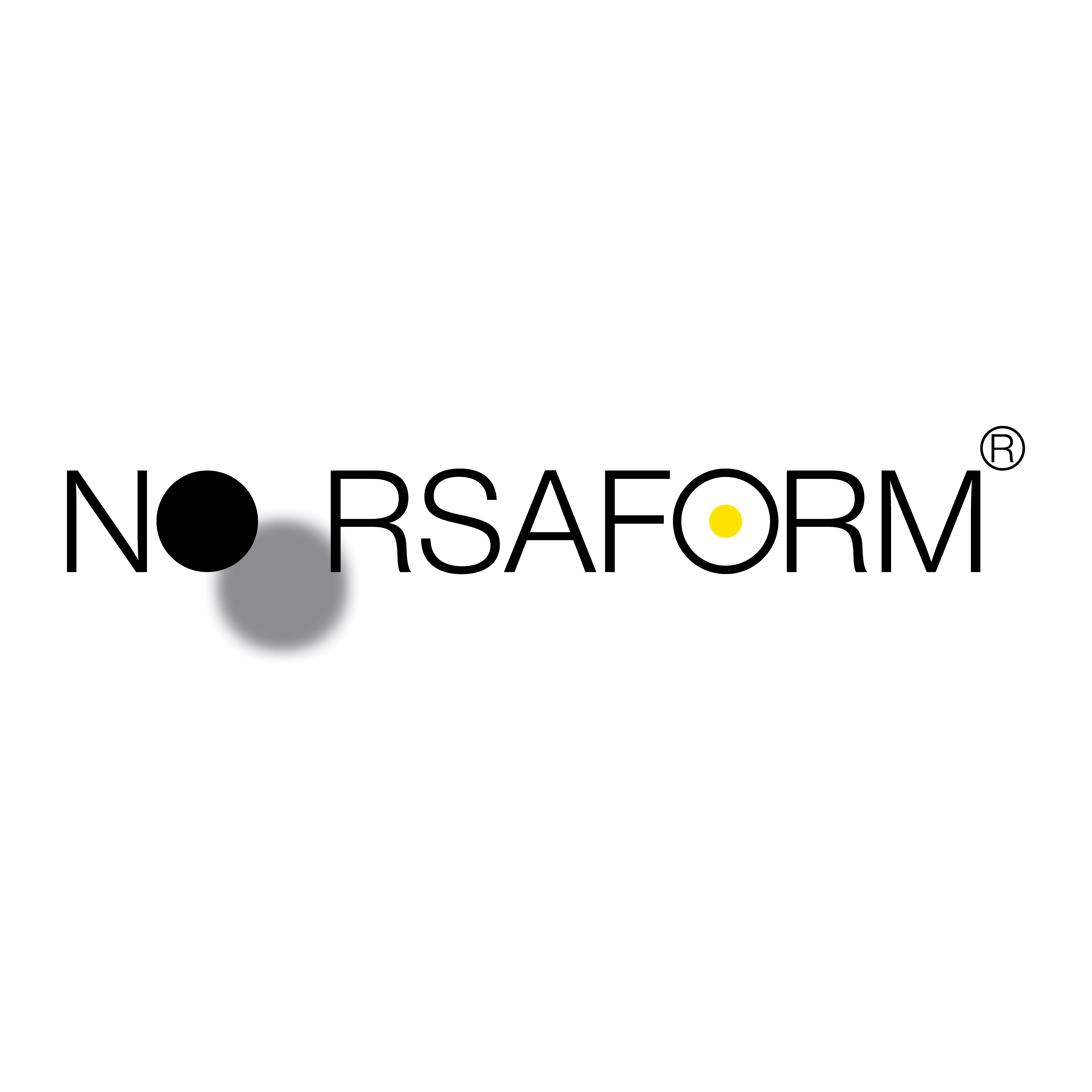Koelschip (Act. 01): Curtain Call
Raoof Dashti
Curated by Maryam Majd Art Projects (MMAP)
in colaboration with Pejman Foundation: Argo Factory
May 9 – June 13, 2025
Maryam Majd Art Projects (MMAP), in collaboration with Pejman Foundation: Argo Factory, presents “Curtain Call”, a solo exhibition by multidisciplinary artist Raoof Dashti. Marking his fifth solo show, the exhibition features three video works and eighteen photographs that draw on the visual language of theater to examine identity, visibility, and personal narrative within regulated cultural frameworks.
Rooted in Raoof’s background in theater, “Curtain Call” continues his practice of staging objects to imply human presence without direct representation, using meticulously composed scenes to evoke narrative and emotion. Building on the trajectory of “Dis-Orientation” (2021), where he began drawing more explicitly from personal experience, this body of work moves further toward abstraction and introspection.
Raoof began working on “Curtain Call” by returning to theaters where he had performed as a child. Over the course of a year and a half, he revisited halls across Iran—in cities like Mashhad, Qazvin, Quchan and Tehran. These once-familiar spaces became sites for reflection and image-making. Photographing drawn curtains, silent seating areas, and bouquets left behind—traces of past performances—this process allowed him to confront personal experiences through visual form. The resulting works stem from this act of return and re-staging.
Raoof’s return to theater spaces reflects broader psychological and social tensions. His works capture moments of suspension, between concealment and exposure, which he frames as psychosomatic states, where personal anxiety intersects with social constraint: the same anxiety he once felt in the moments before, during, and after performing, fearing the possibility of overexposure.
At the core of “Curtain Call” is the curtain—both a theatrical element and a conceptual boundary between visibility and concealment. It marks the tension between the imaginary and real, public and private, exposure and restraint. In Raoof’s work, the curtain becomes a psychological threshold, evoking vulnerability and self-confrontation. Due to his socio-political approach, the curtain also takes on a symbolic role, separating the outside world from the inside—a division between collective realities and the intimate self.
The body of work in “Curtain Call”, as in his other works, is best understood as a series rather than as individual frames. Presented through both video and photography, the works are unified by recurring motifs and a consistent spatial logic, forming a cohesive narrative that encourages the viewer to engage with the entire body of work across multiple mediums, tones, and visual languages.
Curator’s Note
Proscenium Dreams
By Maryam Majd – April 2024
“Curtain Call” is a multidisciplinary image-based exhibition consisting of videos and photographs tracing a journey of self-discovery. Through three video narratives and eighteen photographs of old theater stages, curtains, seats, and scattered flowers, the exhibition explores identity as both performance and truth.
Framed by the symbolism of the proscenium and the act of the final bow, “Curtain Call” reflects on what it means to live behind the curtain—and what it takes to step beyond it.
At its core, the show challenges the gaze and delves into its dynamics: who watches, who hides, and who dares to be seen, how the camera sees, how society watches, and how individuals internalize or resist that gaze. The gaze—long theorized in feminist and gender discourse—is here not only an external force, but a structure internalized, fractured, and sometimes reclaimed. The works reflect on the quiet, complex negotiations of selfhood, visibility, and survival in environments where normative expectations are rigid and nonconformity of any kind is met with judgment or erasure.
The show also places identity as its core theme—not as a fixed category but as a fluid, lived process constantly under construction. The Proscenium Stage—the space that frames the performance in a theater—can represent the social context or the ‘stage’ upon which individuals present themselves. Self-reflection in this sense is not only about what is revealed behind the curtain, but also how that revelation is shaped by external forces. Just as a performance on a stage is influenced by the direction, lighting, and set design, one’s self-presentation can be influenced by societal expectations, cultural norms, and the gaze of others.
As an image-based narrative, “Curtain Call” also challenges viewers to confront their own assumptions while providing space for stories often silenced. It asks: Who gets to define identity? How do social norms shape perception? And what power lies in reclaiming the right to be seen? Identity here is also relational: it is shaped in response to both acceptance and rejection, community and solitude, love and fear.
Owing to his social, political and cultural concerns, Raoof Dashti’s body of work has always been meticulously metaphorical, born not from a desire for self-expression alone but from a deep, urgent socio-political and cultural engagement. Rather than dwelling solely on personal narratives, he deliberately constructs visual languages that invite a wider audience to engage with issues they can connect with in a different way and create their own world and “Curtain Call” is no exception. In this collection, the focal metaphor (or literal imagery) of curtains captures the space between visibility and concealment and curtains suggest a border—a soft, permeable veil that separates private life from public gaze. The curtain, here, becomes a site of gestation, a psychic and emotional interior where identity can form away from hostile gazes. It also affirms that visibility is not always liberation, and invisibility is not always repression. The curtain honors the complexity of choosing when and how to be seen.
On a conceptual and artistic level, also, curtains have had a very significant role both in Persian Painting and in real life from early times to the present in Iran. “Behind the curtain”, a very popular and commonly used idiom, for example, is where truth is concealed, where desire lives, where identities are explored in secrecy, and where truths are whispered rather than declared. Not to mention that in traditional societies, living “behind curtains” is often a matter of necessity—a strategy for self-preservation—but not always a place of shame; sometimes, it becomes a site of intimacy, sanctuary, and even transformation.
Given Iran’s current socio-cultural and socio-political climate, the turning point in “Curtain Call” could be said to lie in the quiet act of reversal. The subject, once watched, becomes the watcher. The videos and photographs destabilize the traditional power dynamics of the gaze. The narrator speaks—not to ask for permission, but to witness himself.
In this series, the remnants of old proscenium stages where the artist once performed as a young actor—curtains slightly ajar, empty seats, wilted flowers thrown after a performance—serve as quiet metaphors for the emotional terrain of identity. They capture moments that oscillate between intimacy and distance. The videos act as minor stages, where affect, memory, and embodiment are performed without the promise of resolution. These works do not ask to be decoded; instead, they insist on ambiguity as a form of survival—a nonconformist strategy that operates in deferral, metaphor, and myth. These are not grand gestures but subtle residues of what it means to exist on a threshold: between private knowing and public exposure, between societal judgment and personal truth.
The videos, too, act as intimate monologues—fragments of memory, reflection, and confrontation. In the imagery of empty seats and abandoned bouquets, we also sense the ghosts of audiences’ past: those who applauded without knowing and judged without seeing. This is how the metaphor of empty seats in a theater evokes feelings of uncertainty or anxiety—wondering whether one’s true self will be accepted or understood by others. These empty seats, on another level, also symbolize a sense of freedom—the idea that, without an audience, one can reflect and explore their identity in privacy and security before choosing when and how to reveal it. In this way, the artist emphasizes the matter of perception and interpretation as two of the most critical concepts of contemporary actuality.
After walking through the installation and sinking into the artistic narrative through the exposed visuals, the gaze is reversed. The narrator looks back as if the curtain is drawn not to conceal but to mark the moment of becoming. This is how the show reverses the gaze—allowing the subject to look back at the viewer—as a powerful act of reclaiming agency and asserting subjectivity.
Ultimately, “Curtain Call” is about the soft power of the final bow, when the curtain falls not in shame or concealment, but in completion. With its themes of theatricality, the gaze, and self-representation, the show mirrors the precarious dance between concealment and exposure that many Iranians navigate daily.
Raoof Dashti
(B. 1984, Ahvaz, Iran)
Raoof Dashti is a multidisciplinary artist based in Tehran. He holds a B.A. in Painting from Shahed Art University and works primarily with photography and video. With a background in puppet theater and playwriting, his practice is rooted in storytelling through the creative use of objects, exploring the relationship between narrative, memory, and self-representation. Apart from the current show, Raoof has held four other solo exhibitions, including two at Aaran Projects and earlier shows at Mohsen and Azad Art Galleries in Tehran. His work has also been featured in group exhibitions internationally, including “Urban Mapping” (Washington D.C., 2017; Scottsdale, 2020), “Les Instants Vidéo” International Video Art Festival (Marseille, France, 2018) and “DongGang” International Photo Festival (Seoul, Korea, 2019).
Maryam Majd Art Projects (MMAP)
Maryam Majd Art Projects is a Tehran-based, research-driven curatorial platform founded in 2021. Offering tailored services in contemporary art, including curatorial projects, project management, consultancy, archival projects, collection management, research and content creation, the platform seeks to cater to artists, institutions, and collections. MMAP embraces collaboration with curators, collectors, scholars, and institutions to support the development of ideas and initiatives through research, planning, management, and hosting.
Koelschip (Act. 01)
Koelschip is the title of a series of projects taking place in the basement of the Argo Factory.
This space is dedicated to supporting process-based and experimental artistic practices. The title Koelschip refers to the factory’s industrial cooling basins, which were originally used to rapidly cool down hot liquids, particularly during fermentation processes.
ATP Images
Founded in Germany in 1983, ATP Images covers international events and works directly with Getty Images. Drawing on decades of experience collaborating with leading media outlets such as The Guardian, The New York Times, and CNN, the agency upholds the highest professional standards in photography. In recent years ATP Images Gallery has also amassed a vast archive of negatives and works by renowned photographers.
Maryam Majd Art Projects (MMAP)
Curator: Maryam Majd
Assistant Curator and Project Manager: Sarah Yazdanirad
Project Assistant: Shahrooz Mohammad
Research & Content: Sara Faezipour & Babak Mirmalek-Sani
Art Director: Iman Safaei
Fine Art Printing: ATP Images Gallery Lab
Special thanks to: Ava Ayoubi, Amirhossein Esmaeili and Sam Cafe
This project would not be possible without the help of:
Ali Sanifar, Mohamadreza Najafi, Emad Nasrabadi, Faramarz Ahmadi, Reza Shirvan, Mohamad Asadabadi, Mehdi Chitsazha, Hossein Akbarpour, Naghmeh Manavi, Mona Barani, Armin Alian, Ali Hataminezhad, Masood Aghli, Mahmoud Karimi
And special thanks to: Sina Sharbafi






